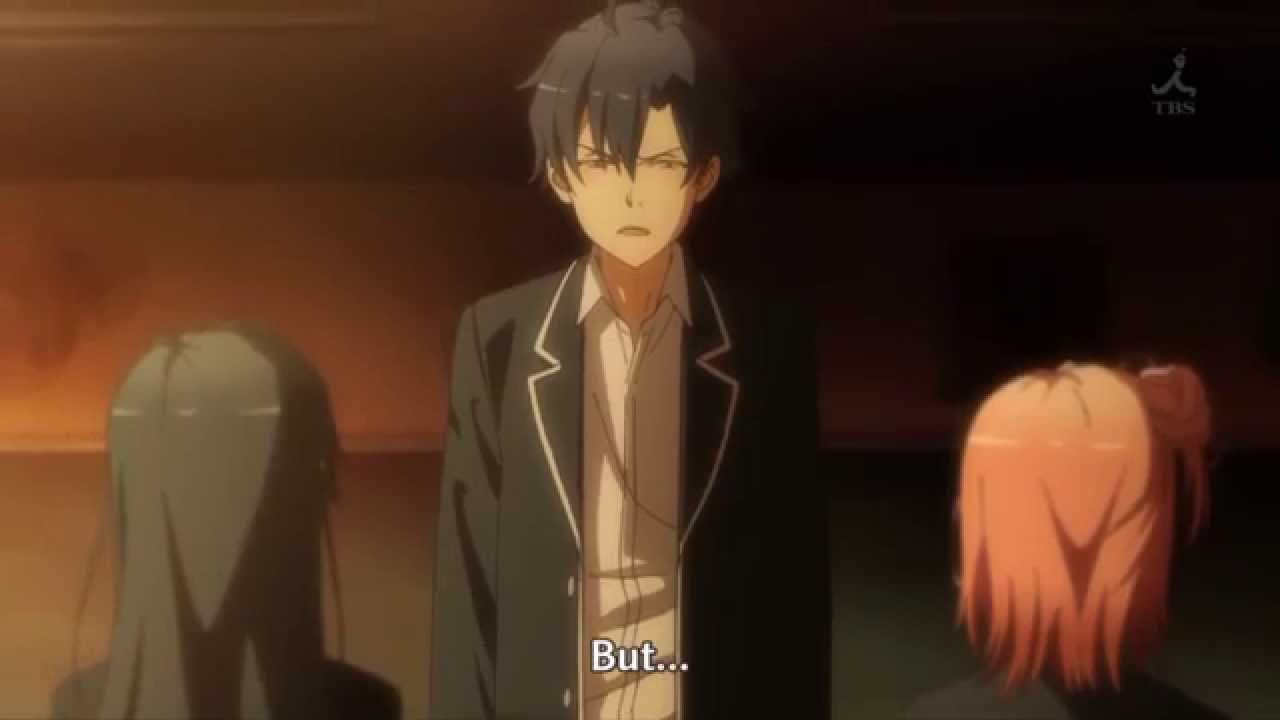
A (human) index that likes to code
Also drinks way too much coffee ![]()
Yahari Ore no Seishun Love Comedy wa Machigatteiru
Published Apr 18, 2021

Yahari Ore no Seishun Love Comedy wa Machigatteiru (やはり俺の青春ラブコメはまちがっている。)
8★
This review covers both Season 1, 2 (Zoku) and 3 (Kan). I binged this series while waiting for the Winter 2021 anime to finish airing; and I’ve got to say, I didn’t expect to enjoy it so much.
Perhaps watching this anime filled the gaps I had during my school life; for the most part, my schooling years was spent perfecting my craft, earning accolades from my dream industry and securing my future amidst the highly volatile environment we live today. Truth to be told, while I am comfortably progressing with my life thanks to the effort-laden past, I can’t help but regret having a ghostly social presence in my classes as I pursued my goals.
As a recluse, I turned to high school anime to see what could have been - luckily, it seemed that the “social-outcast-turned-romantic-high-school-life” troupe is pre valiant in the high-school romance anime genre. In less abstract terms, I resonated well with certain characteristics of the characters in the anime; easily misunderstood, always conforming and socially distant due to pure disinterest.
Story
Disclaimer: I am an anime-only consumer of this series.
Cliché. Or is it?
Perhaps ‘standard’ is the closer descriptor - in the other high school romance anime, there is always a differentiating factor that stands out; in “Kaguya-sama”, that would be the “intelligence war” waged between the love interests, in “Bunny-Girl Senpai”, that would be the supernatural ‘curses’ that befall each character.
In Oregairu (short-form of the series), I personally believe that the characters themselves are the differentiating factor. The complexities between each character’s personalities causes conflicts that spark plot progression - an astute example would be the conduct of the prom, which is the premise of the entire third season, and also what I believe is the last conflict before the climax of the entire series. The relationships between the main characters are progressive and consistent with their behaviour at that point of time - for instance, in a bid to preserve the group’s status quo (as friends and not romantic partners), all three of them purposefully grew distant from one another, only to come back together for a surprise aquarium visit.

Hikigaya during the final conversation at the Sunset | Source: BeneathTheTangles
Later on, Hikigaya finally steps out of his comfort zone, and wishes for something genuine. The group intrinsically understands that despite the status quo being on its last legs, they have to move on, which creates the force required for plot progression in Season 3 (Kan).
The self-awareness presented by all the characters in the anime about their own characteristics and how it interacts with others are subtle yet effective; which makes every emotion and thought genuine and capturing the attention of the viewer to provide the “romance” and “drama” elements demanded from Oregairu.
In essence, what you should be looking out for in Oregairu is how the characters interact with one another; the other plot elements, such as the events that they are working on, and the situation that is being dealt with are less important in the grand scheme of things. If you still need further convincing, just take a look at this short clip of the two Hikigaya siblings interacting with one another:
That scored pretty high in my book | Source: Kashimuiko Chan
For context, Hikigaya Hachiman used to only trust and care for his sister; she is a key support pillar for most of the conflicts in Oregairu.
Characters
Oregairu is an anime that uses its side-characters well. These characters are usually the source of a conflict or a progression device; some prominent examples include Yukinoshita Haruno (Yukino’s sister), who causes Yukino a great deal of stress for being compared to, and Isshiki Iroha, who generates endless problems for Hikigaya’s crew to work on.
Furthermore, for characters such as Hikigaya Komachi, they serve as supporting pillars for the main characters, dutifully and obviously filling gaps between major events in the anime for continuity. In fact, it can be seen quite regularly, where Komachi goes through an entire comedic routine with her brother about being oblivious to her intentions of leaving Hachiman and Yukino alone, together.
All of Oregairu characters, with the exception of Totsuka Saika and Zaimokuza Yoshiteru have relevant backstories and “powerful positions” for plot continuity; a good example being Hiratsuka Shizuka having the status of a teacher, which allows the main characters to form a club, interact with the Parent-Teacher committee and influence the school to make a decision otherwise impossible for the plot device (student council) or main characters alone.
The dynamics of the characters are also well protrayed - the realism presented by Hikigaya pairs well with the flawless and logical Yukinoshita, and contrasts properly with his sister, Komachi. Furthermore, Hikigaya has good mentor-student dynamics with Shizuka-sensei, with the latter even stating that Hikigaya is much like herself, which makes the relationship feel closer to a life senior rather than a traditional teacher and student relationship.
As the story progresses, the behaviours change - the writing is done well enough such that the changes are continuous and expected rather than sudden; this portrays growth to the viewers, which keeps the series engaging for the viewers through a “fresh-every-second” manner.
Audiovisuals
Oregairu, as of writing, has aired on 2013 (season 1), 2015 (season 2), and 2020 (season 3), throughout which the audiovisuals improved steadily. The pinnacle of artstyle and music in the series is expectedly achieved in 2020, although the quality of audiovisuals were more than sufficient to convey the right mood for all three parts of the series no matter the scene.
There is nothing else that stands out for the audiovisuals; which might be a good thing considering the main focus of the anime should be within its dramatic elements. Nevertheless, seeing as how Shigatsu wa Kimi no Uso was able to elevate the experience with the soundtrack, I can’t help but feel that much is desired as I watched Oregairu.
Conclusion
Frankly, I only enjoyed Oregairu a lot because of my circumstances - perhaps if you led a more socially fulfilling life, you would have found Oregairu boring. Nevertheless, I believe that as long as you are okay with gradual plot development and seemingly long arcs, then I think you’ll find Oregairu quite an enjoyable watch.
Happy Coding
CodingIndex